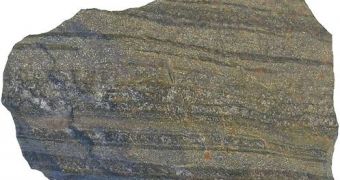Scientists have taken a new step in better understanding the complex and intricate processes that go on under our planet's crust, when they have recently discovered the first Earth pump, which they say plays a crucial role in the formation of ore deposits, and in creating the best conditions possible for earthquakes. Researchers at the Commonwealth Scientific and Industrial Research Organization (CSIRO), in Australia, named the process “creep cavitation,” and described it as involving fluid being pumped through pores in deformed rocks in mid-crustal sheer zones, some 15 kilometers deep.
According to the study, this transfer also plays a crucial role in degassing the mantle, and in favoring tectonic movement, especially in the middle layers of the planet's crust. Oddly enough, the researchers used a very peculiar material to make the new finds, namely one-millimeter-sized pieces of rock, formed some 320 million years ago, in Alice Springs. The rocks were found exposed on the ground. The paper supporting the discovery, entitled “Creep cavitation can establish a dynamic granular fluid pump in ductile shear zones,” appears in the latest issue of the respected scientific journal Nature.
“We are seeing the direct evidence for one of the processes that got ore forming fluids moving up from the mantle to the shallow crust to form the ore deposits we mine today, it is also one of the mechanisms that can lead to earthquakes in the middle crust,” Dr. Rob Hough, who is a scientist at the research organization's Exploration and Mining division, explains.
“While we understand reasonably well why earthquakes happen in general, due to stress build-up caused by motions of tectonic plates, the triggering of earthquakes is much more complex,” University of Western Australia expert Dr. Florian Fusseis, who has also been the leader of the new research, adds. He says that the data that was recently collected could offer significant new information and raw materials for new theories as to how earthquakes come to form.
“To understand the 'where' and 'when' of earthquakes, the 'how' needs to be understood first. We know that earthquakes nucleate by failure on a small part of a shear zone,” Fusseis shares. High-resolution Synchrotron X-ray tomographic and scanning electron microscope observations at the nanoscale were used for the study, as well as other advanced visualization techniques. The researchers propose that the pump is self-sustaining, and that it is powered by its own movements.

 14 DAY TRIAL //
14 DAY TRIAL //